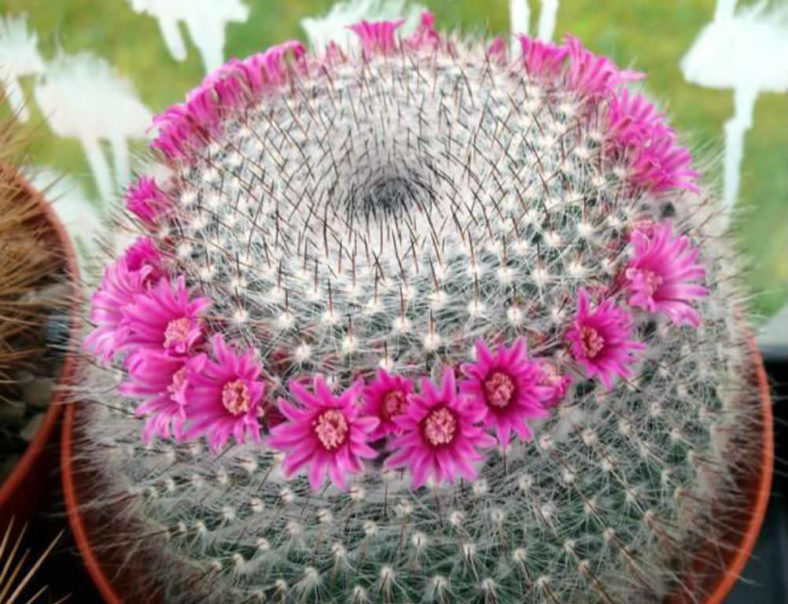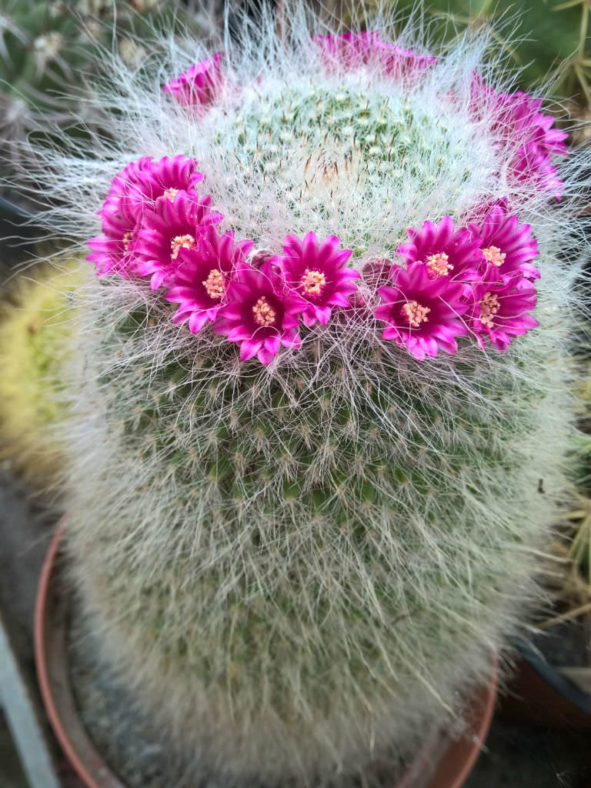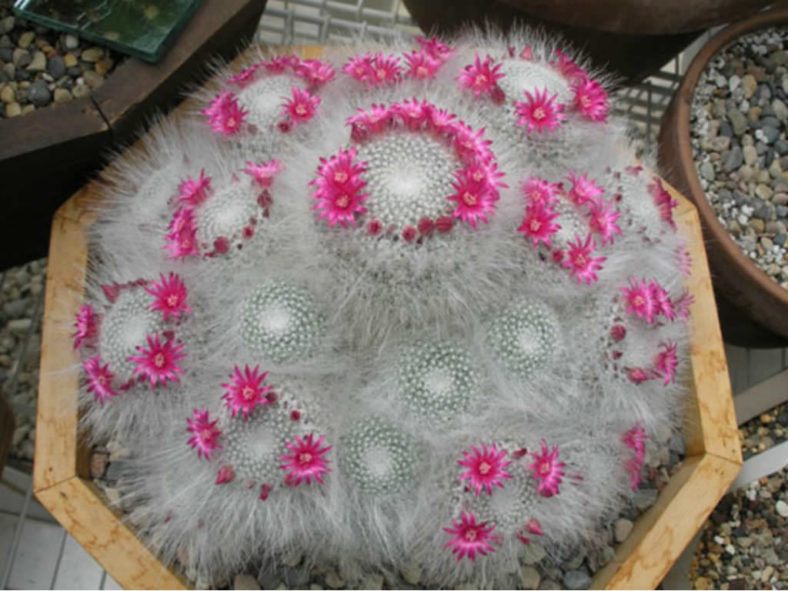Scientific Name
Mammillaria hahniana Werderm.
Common Name(s)
Birthday Cake Cactus, Old Lady Cactus, Old Lady of Mexico, Old Lady Pincushion, Old Woman Cactus
Synonym(s)
Mammillaria hahniana subsp. hahniana, Neomammillaria hahniana
Scientific Classification
Family: Cactaceae
Subfamily: Cactoideae
Tribe: Cacteae
Subtribe: Cactinae
Genus: Mammillaria
Origin
Mammillaria hahniana is native to central Mexico. It grows at elevations that range from 2,460 to 7,220 feet (750 to 2,200 m) in San Luis Potosí, Guanajuato, and Queretaro.
Description
Mammillaria hahniana is a small cactus with spherical stems densely covered with soft white hairs and spines. The stems can grow solitary or in clusters, reaching up to 3.6 inches (9 cm) in height and 4 inches (10 cm) in diameter. The tubercles are short, conical, and tipped with an areole that bears 20 to 30 white radial and 1 to 4 white central spines with a reddish tip. The radial spines are bristle-like and can grow up to 0.6 inches (1.5 cm) long, while the central spines can grow up to 0.2 inches (0.5 cm) long.
The dark pink to reddish-purple flowers appear in late winter and spring, sometimes forming a ring around the tip of the stems. They are funnel-shaped and can reach up to 0.4 inches (1 cm) in length and 0.6 inches (1.5 cm) in diameter. The red, club-shaped fruits can growe up to 0.3 inches (0.7 cm) long and contain tiny brown seeds.

How to Grow and Care
To encourage better flowering, allow the plants to enjoy a cooling period in the winter and suspend watering. Unlike many other cacti, which use their ribs as storage devices, the Mammillaria feature raised tubercles, from which spines emerge. When you water, the tubercles expand to allow for increased water storage. The flowers appear from these tubercles' axils on the previous year's growth, which accounts for their exciting halo effect. The cactus mustn't be exposed to prolonged dampness and sitting water. Never let your cactus sit in a dish of water. Lastly, ensure fertilizer during the growing season for the best results.
Repot as needed, preferably during the warm season. To repot a cactus, ensure the soil is dry before repotting, then gently remove the pot. Next, remove the old soil from the roots, removing any rotted or dead roots.
See more at How to Grow and Care for Mammillaria.
Links
- Back to genus Mammillaria
- Succupedia: Browse succulents by Scientific Name, Common Name, Genus, Family, USDA Hardiness Zone, Origin, or cacti by Genus
Photo Gallery
Click on a photo to see a larger version.

